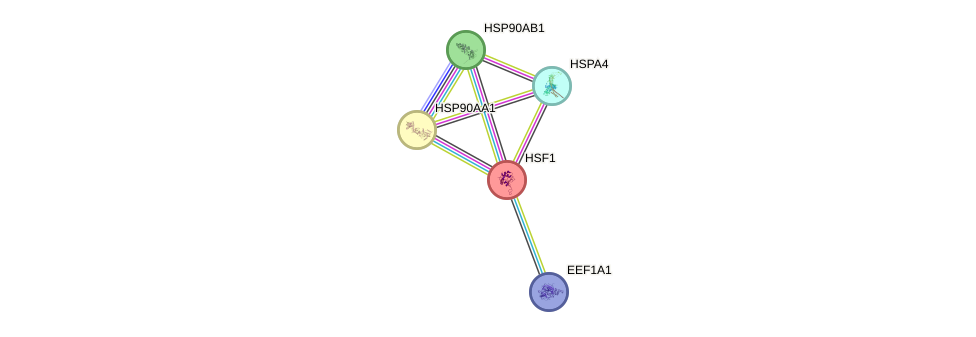GenAge entry for HSF1 (Homo sapiens)
Gene name (HAGRID: 125)
- HGNC symbol
- HSF1
- Aliases
- HSTF1
- Common name
- heat shock transcription factor 1
Potential relevance to the human ageing process
- Main reason for selection
- Entry selected based on evidence directly linking the gene product to ageing in a non-mammalian animal model
- Description
A transcription factor that is activated upon heat shock, HSF1 regulates heat-shock response genes and has been associated with ageing in lower life forms. In roundworms, reducing the activity of a HSF1 homologue appears to accelerate ageing while overexpressing it extends lifespan [626]. In mammals, stress-response appears to diminish with age and it has been reported that HSF1 in aged rats exhibits a decreased ability to bind DNA [458]. Disruption of HSF1 in mice results in multiple defects, including increased prenatal lethality, growth retardation, female infertility, and increased susceptibility to stress [634]. Transgenic mutants overexpressing HSF-1 live longer (median lifespan ~50% higher) and are more thermotolerant [3545]. Although HSF1 has not been directly linked to human ageing, it is possible HSF1 plays some role in human ageing.
Cytogenetic information
- Cytogenetic band
- 8q24.3
- Location
- 144,291,588 bp to 144,314,722 bp
- Orientation
- Plus strand
Protein information
- Gene Ontology
-
Process: GO:0000122; negative regulation of transcription from RNA polymerase II promoter
GO:0001892; embryonic placenta development
GO:0006468; protein phosphorylation
GO:0006952; defense response
GO:0007143; female meiotic division
GO:0007283; spermatogenesis
GO:0007584; response to nutrient
GO:0008285; negative regulation of cell proliferation
GO:0009299; mRNA transcription
GO:0010667; negative regulation of cardiac muscle cell apoptotic process
GO:0014823; response to activity
And 30 more GO terms Cellular component: GO:0000791; euchromatin
GO:0000792; heterochromatin
GO:0005634; nucleus
GO:0005654; nucleoplasm
GO:0005737; cytoplasm
GO:0005829; cytosol
GO:0016605; PML body
GO:0043234; protein complex
GO:0045120; pronucleus
GO:0097165; nuclear stress granule
Show all GO termsFunction: GO:0000978; RNA polymerase II core promoter proximal region sequence-specific DNA binding
GO:0000979; RNA polymerase II core promoter sequence-specific DNA binding
GO:0001078; transcriptional repressor activity, RNA polymerase II core promoter proximal region sequence-specific binding
GO:0001162; RNA polymerase II intronic transcription regulatory region sequence-specific DNA binding
GO:0003677; DNA binding
GO:0003700; transcription factor activity, sequence-specific DNA binding
GO:0005515; protein binding
GO:0019901; protein kinase binding
GO:0031072; heat shock protein binding
GO:0042802; identical protein binding
GO:0043621; protein self-association
And 4 more GO terms
Protein interactions and network
- Protein-protein interacting partners in GenAge
- CREBBP, HSP90AA1, UBE2I, CEBPB, PRKDC, XRCC5, XRCC6, HSF1, SIRT1, HDAC1, HSPA1A, MAPK8, TBP, HSPA8, HDAC2, STUB1
- STRING interaction network
Retrieve sequences for HSF1
Homologs in model organisms
- Caenorhabditis elegans
- hsf-1
- Danio rerio
- hsf1
- Drosophila melanogaster
- Hsf
- Mus musculus
- Hsf1
- Rattus norvegicus
- Hsf1
- Schizosaccharomyces pombe
- hsf1
In other databases
- GenAge model organism genes
- A homolog of this gene for Caenorhabditis elegans is present as hsf-1
- GenDR gene manipulations
- A homolog of this gene for Caenorhabditis elegans is present as hsf-1
- CellAge
- This gene is present as HSF1

